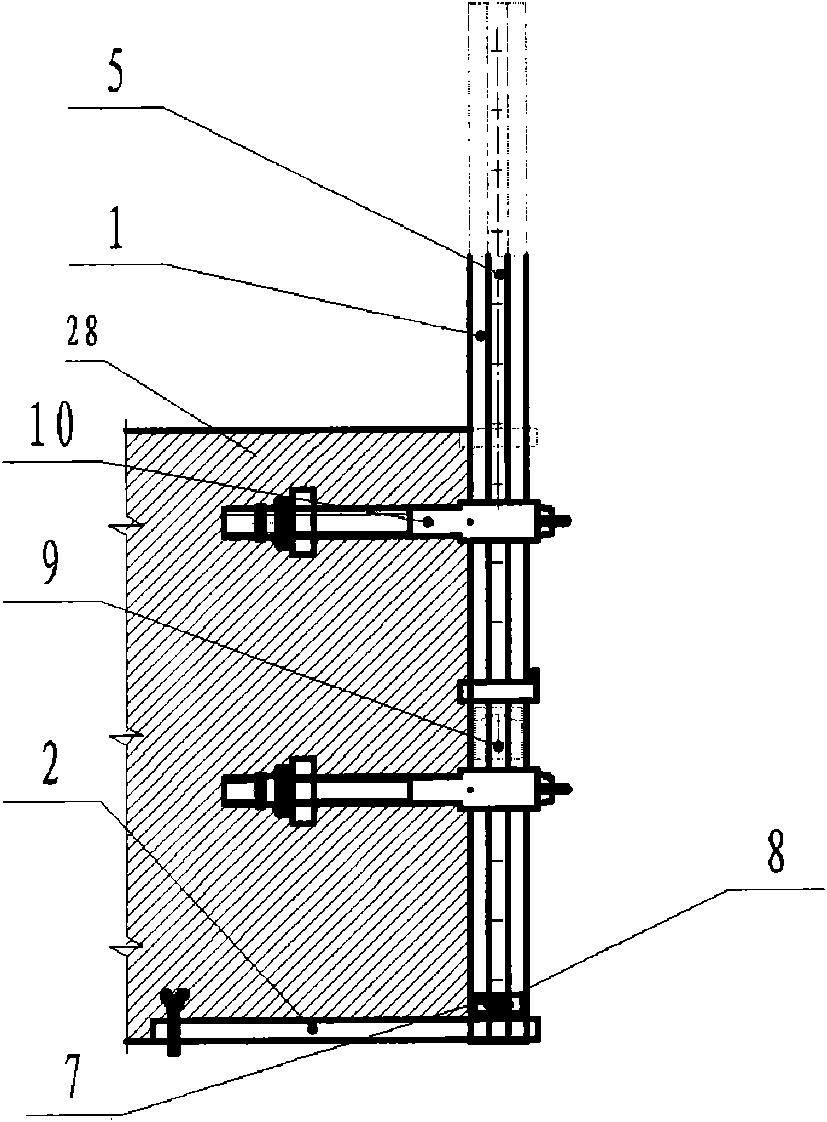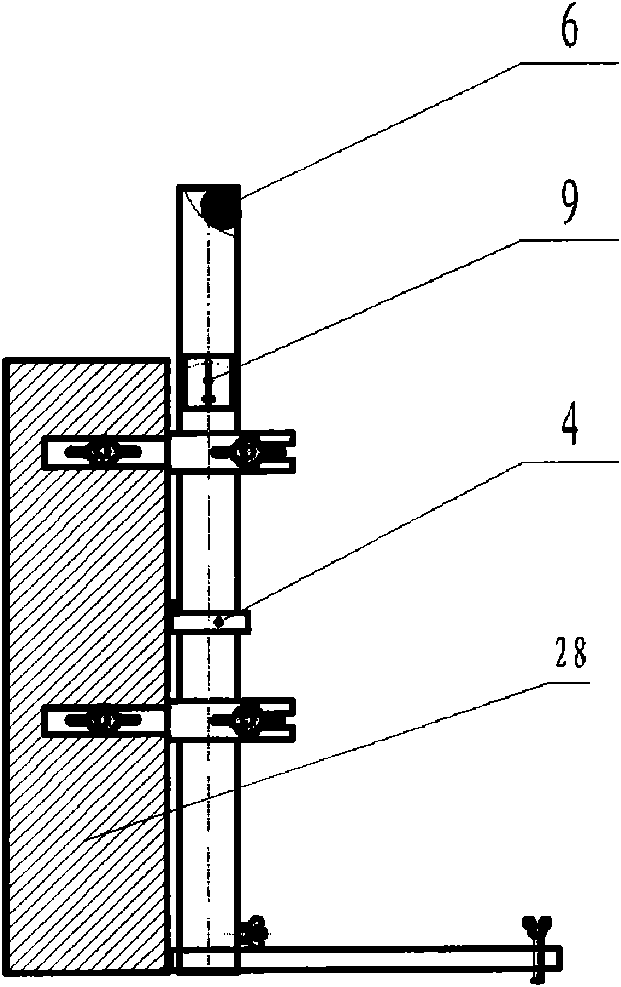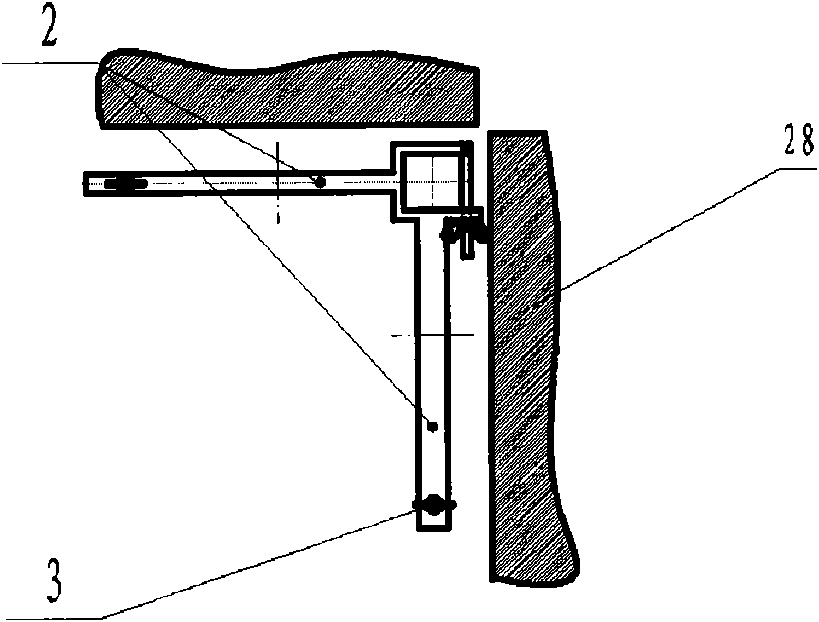[0002] For thousands of years, the operation of building walls has been [1] erecting the rod and leveling the line; [2] laying it out; [3] sitting on the corner and repairing the corner to hang straight; [4] hanging the line on the corner to build the wall, among which The sitting angle is the key to building a wall. It determines the verticality, axis degree, flatness, horizontal joint thickness, height of doorways, windows, openings, etc., and wall elevation, and most of the joints start from the corner. The verticality of the wall is the main item. It is affected by many factors such as the measurement error of the first
brick, the
slope error of the first brick, the error of the upward ruler, the error of the hanging line, and the
position error of the hanging line at the corner. There are errors in the verticality of the wall, and it is rare to achieve vertical 0, and the flatness and verticality of the back of the wall cannot be achieved. The horizontal brick joint in the wall is the weakest part of the wall, and its
compressive strength is smaller than that of bricks. Many, increasing the strength of the
mortar joints improves the
compressive strength of the structure as a whole. However, the current method of building walls by using the number rod sitting angle and hanging wires makes the thickness of the
mortar joints vary. Dust all over, even edge ash, bench ash, etc. often appear. It makes bricklaying fast and labor-saving, and the outside of the ash joints looks full and beautiful. This method is very common. Bricklaying method), but when the
mortar joints are thick, the bricks are placed lightly on the wall, let alone squeezed, which seriously affects the
compressive strength of the main body, and because the height is difficult to control,
doors, windows, and openings It is difficult to control the height of the
lintel and the height of the top of the wall, which will affect the structural quality such as the section of the ring beam, the positioning of the
steel bar, and the thickness of the protective layer; the
lintel of the door and window, especially on the outer wall, because the upper opening of the window is of the same height, it is necessary to put the plaster It is difficult to control the plaster thickness below 25mm, which is a
threat to the safety of residents; the height error of window sills and reserved openings is very common, and beating pea
lime on window sills, and
cutting walls in reserved openings are very common, which is both labor-intensive and labor-intensive. The material, the
national standard gray joint is 8-12mm, and preferably 10mm, and the most widely used 5.3 brick, it is technically determined that the brick layer (painted
skin number) is generally between 63.5mm-64.5mm, and 64mm is the most common , and 63mm is 10mm mortar joints, and few brick
layers are determined to be 63mm. Because the total elevation of 10mm mortar joints is difficult to control, people are used to 11mm mortar joints. If the mortar joints are slightly uneven, they will exceed 12 mm. , it has a great influence on the compressive strength of the main body. It reflects that people's operations are generally not standardized. The requirements are stricter, the standing seam of the dry wall has a great influence on the efficiency, the vertical error has a great influence on the building quality, and the performance of the main structure is reduced, the seismic performance is reduced, and the thickness of the plaster is increased, which not only wastes a lot of materials, but also makes The quality of the plastering cannot be guaranteed, such as increased hollowing, etc., especially on the outer walls, the plastering is too thick and hollow, and falls off, which poses a
threat to the past residents. The current residents pay more attention to the accuracy of the
usable area of the house during the house inspection. Whether the house area shrinks or expands, whether the room is square or not, whether the sticky floor tiles appear beveled, and these are all affected by the vertical error and the axis degree. The horizontal mortar joints have a greater
impact on the compressive strength, such as If one layer is thicker or less plaster is applied, the compressive strength of the entire wall will be weakened, and the level will also affect the height of doorways, windows, holes, and ring beams, making the upper plaster too thick, hollow, and falling , so that the safety of the residents is threatened, and the change of the total height of the wall affects the beam section of the upper circle. Moreover, the place where the thickness of the plaster has the largest error is at the window window of the outer wall, so it has a lot of cracks and hollows, and there is a danger of falling
 Login to View More
Login to View More  Login to View More
Login to View More 


